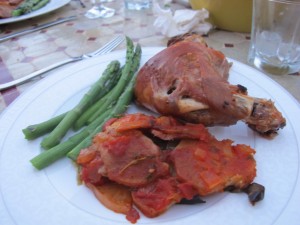
Many of us who live in the Americas have a background rooted in Europe, Africa, Asia and/or the Middle East. We might even have a mix of two or more of those origins embedded in our DNA. However, I dare say we are not only defined by how we look, but we are greatly influenced by traditions, culture and environment of the place where we live. Puerto Rico has a very particular mix of Spanish (European)/African/Native Taino Indians that has defined our musical, literary, and culinary identity over the last 500 years. Also, people who lived in Mediterranean islands like Corsica and Mallorca, where lured to Puerto Rico to work the coffee and sugar cane fields. In more recent history (since 1898), you must add to the equation, the inevitable influences of the United States of America as a consequence of the Hispanic American War and Treaty of Paris 1898.

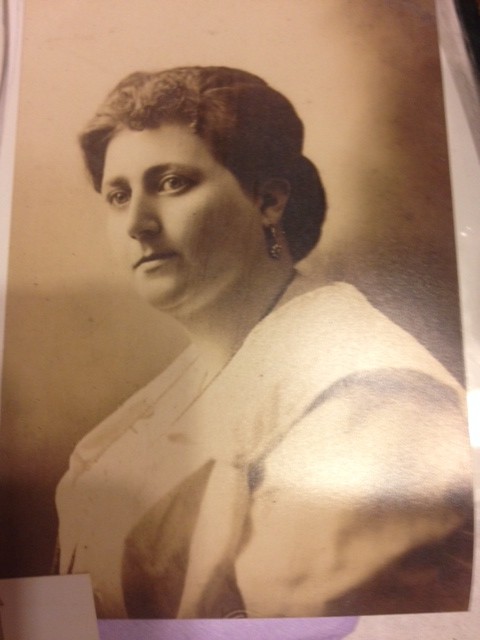
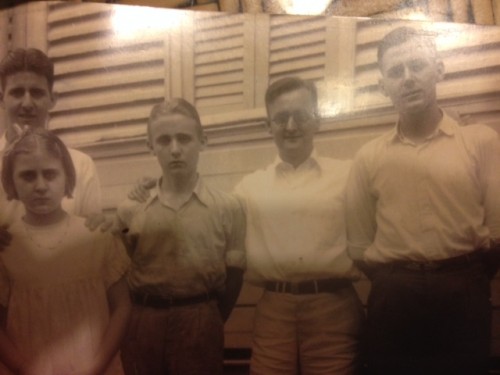
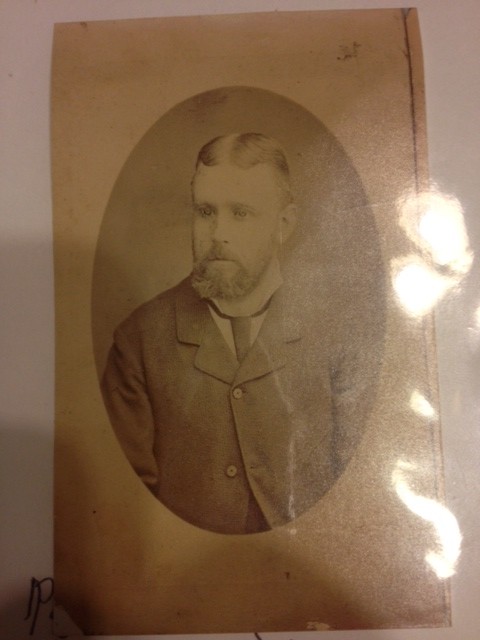
My grandfather was born in Ponce, Puerto Rico but as a young child, his parents decided to return to live in Mallorca, where he remained until his early twenties. My father is the first generation that was born AND raised in Puerto Rico. Although some of his ancestors had been going back and forth between Spain and Puerto Rico during the late 19th century in pursuit of prosperity, my paternal grandparent’s generation was the first one to stay for good in the Caribbean. Hence, all of the direct descendants of Bartolo and Chelo born and raised on the island are by definition and idiosyncrasy; Puerto Rican.
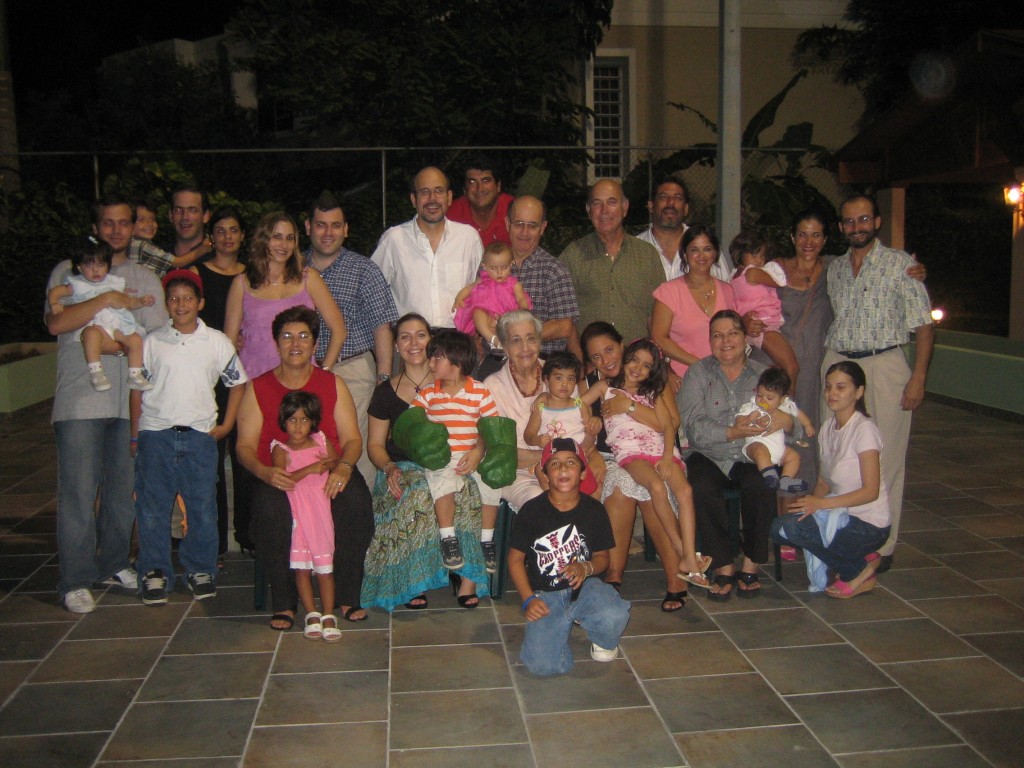
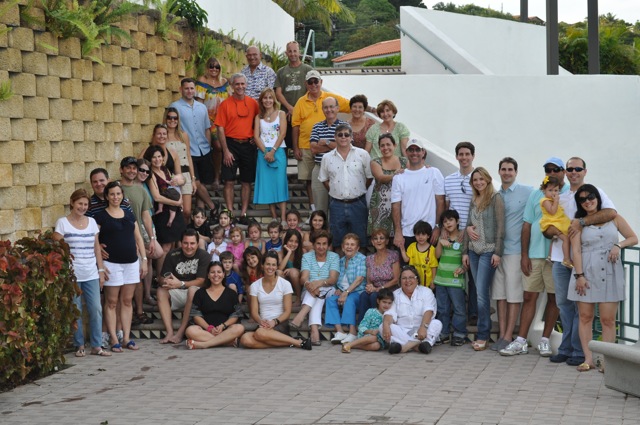
Although I have been influenced throughout my life by travel and Old world family traditions (my Spanish grandparents lived to be 80 and 94 and thankfully, my Puerto Rican grandparents are still alive!), I consider myself Puerto Rican in every aspect. Simply, I love our food, my hips cannot contain themselves to the sound of our music, I grew up with stories about pirates and taino legends, I start to recite a rhyme whenever I hear the word “bomba!”, my favorite time of the year in Puerto Rico is Christmas season and the island’s sun, mountains and ocean give me energy and peace. I embrace my Puerto Rican heritage with all that it entails; the good, the bad and the ugly.
During a business meeting the other day, I met someone who stated in casual conversation that he was italian. I asked him (in italian) from which part of Italy he hailed from and he immediately corrected his statement saying that his great grandfather emmigrated to PR, but he had never visited Italy or spoke the language. This got me thinking, it would have never occurred to me to say that I am from Spain just because my ancestors were Spaniards. Heck, I don’t even speak like Spaniards do! Every single time I have been asked where I am from, the indisputable answer has been; Puerto Rico.
In my family circle, I am the one who is always interrogating the elders, documenting family trees and keeping in touch with the new generations of cousins that have spilled all over the world, (I am thankful for technology with that!). I have found that in many of the family stories, the protagonists, who ventured on a boat to an uncertain future at the other side of the world, some by strong will and necessity and others by accident, consequently ended up making a living and establishing their families in America, since very few decided to return to “La Madre Patria”.
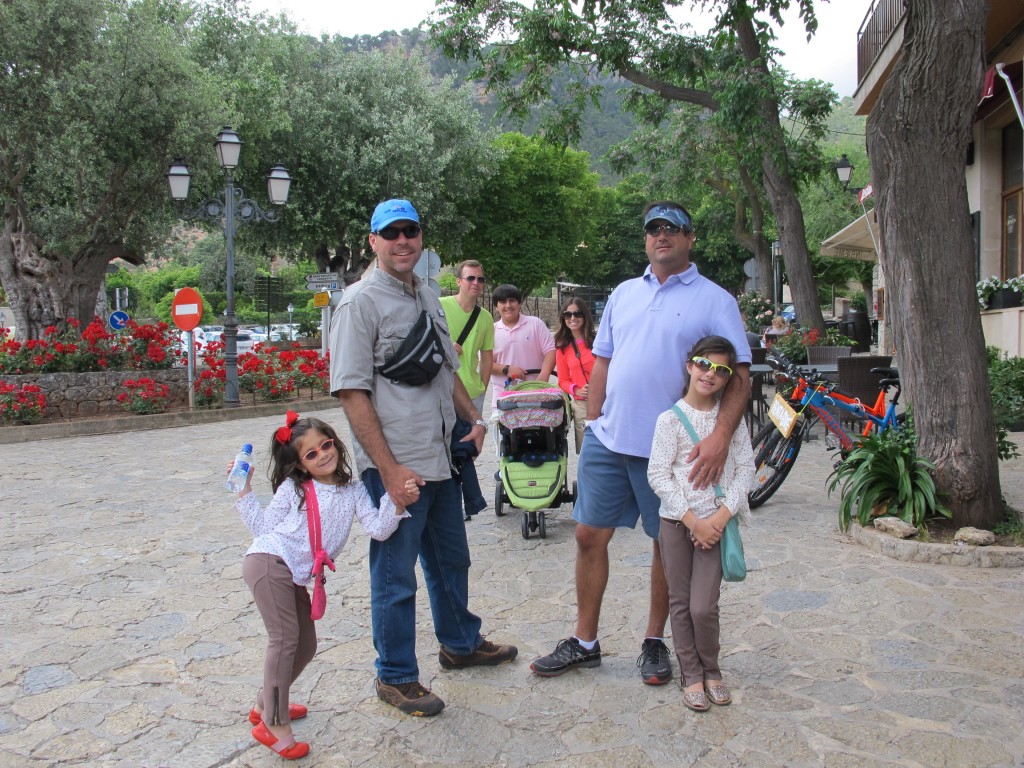
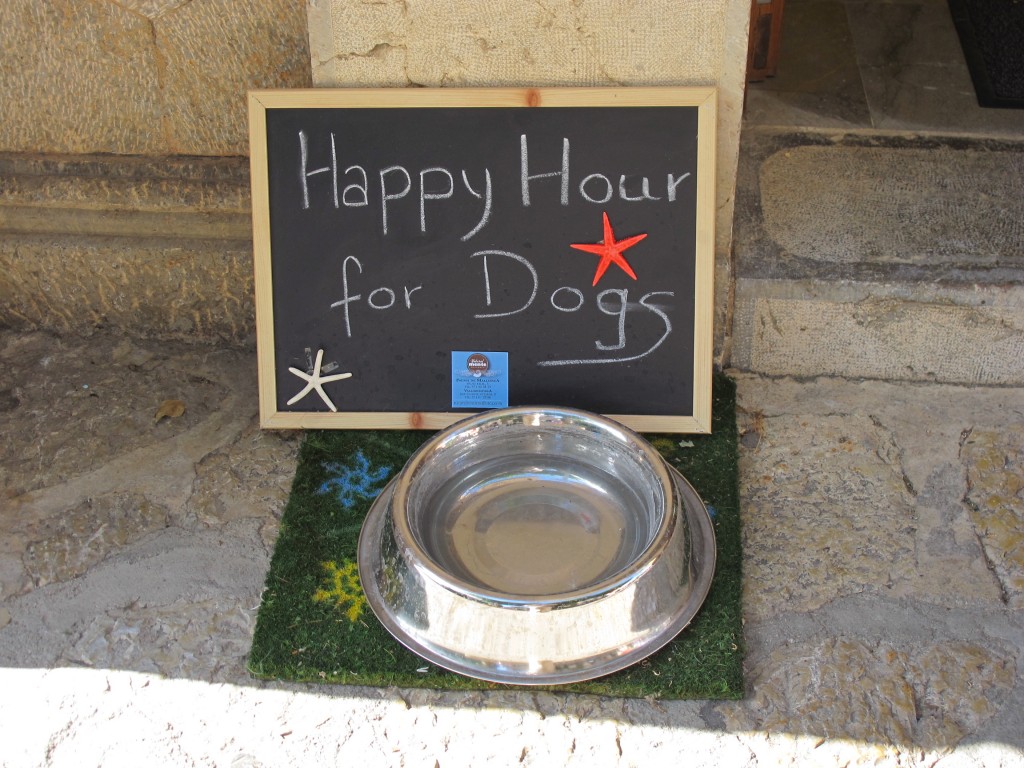
In recent years, my mother (if you ask her where she is from, she will say from Ponce before saying from Puerto Rico, but that is another story that only locals will understand, Je!), whose side of he family also has its roots in Spain but whose ancestors landed in PR more than 3 generations ago in the 1800’s and currently has no ties to relatives in the Iberian Peninsula, had been planning a family trip to celebrate their 45th wedding anniversary to the island of Mallorca. She had been unsuccessful due to conflicting schedules and unexpected situations, until last April (2014) when she made a quick survey among her children about dates and availability and EVERYONE could escape the last week of May. Immediately, she called her personal travel agent (Me!) and the plane tickets were bought, the 6 bedroom house and 2 minivans rented and our Mallorcan cousins notified about our imminent arrival.
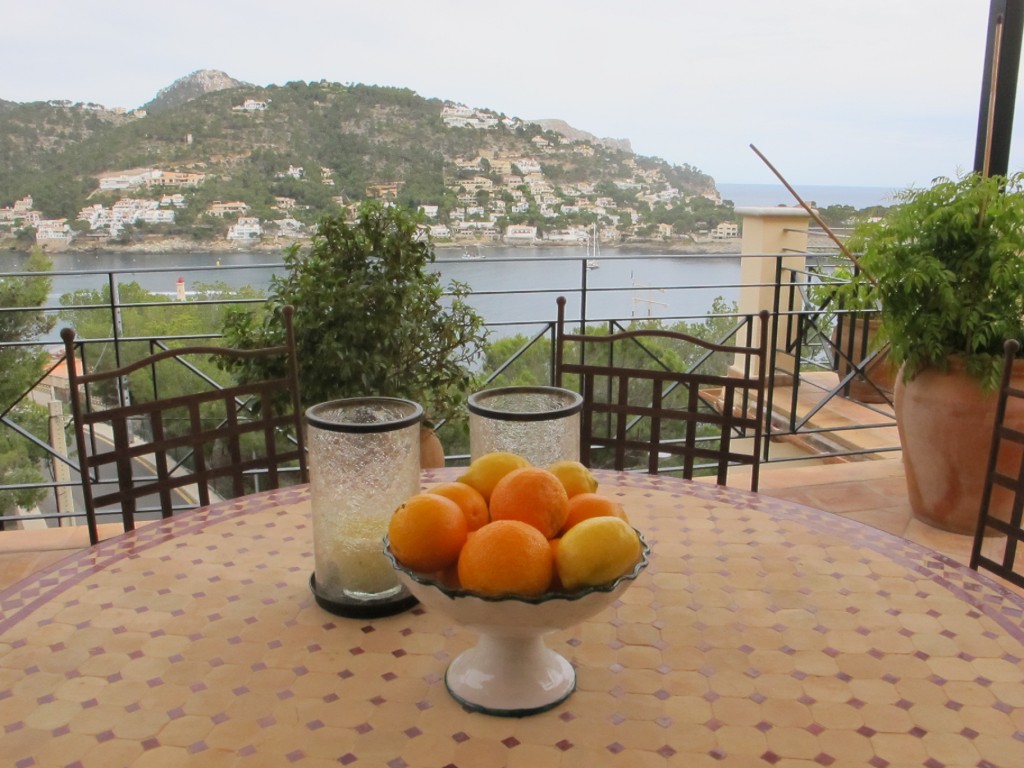
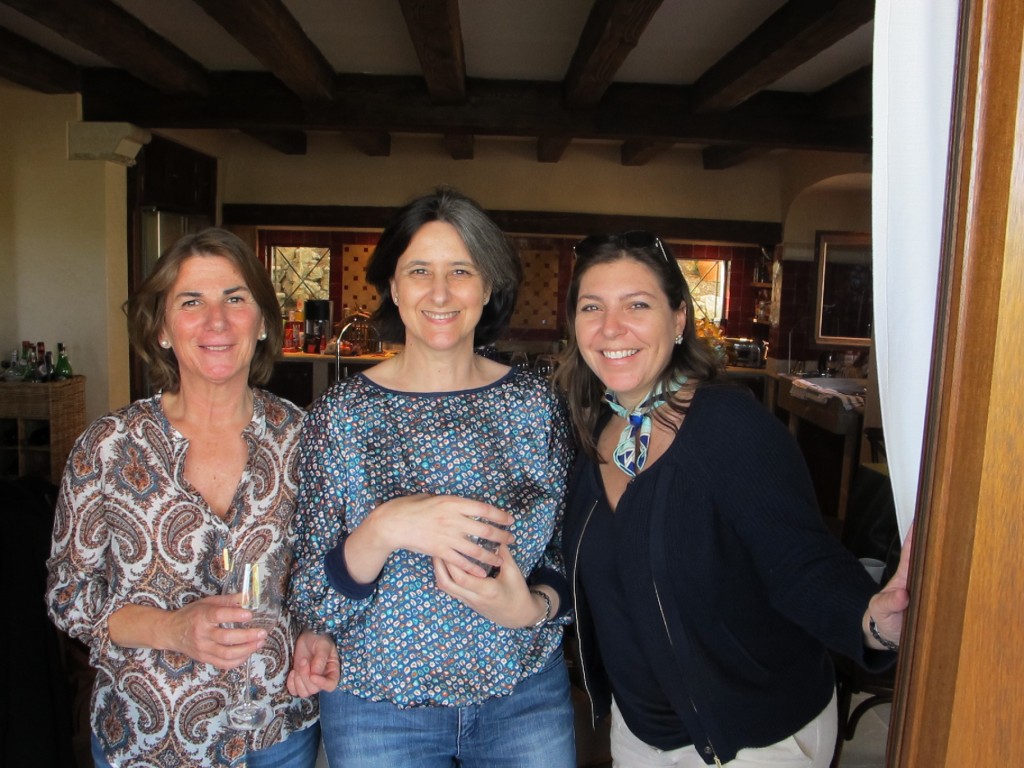
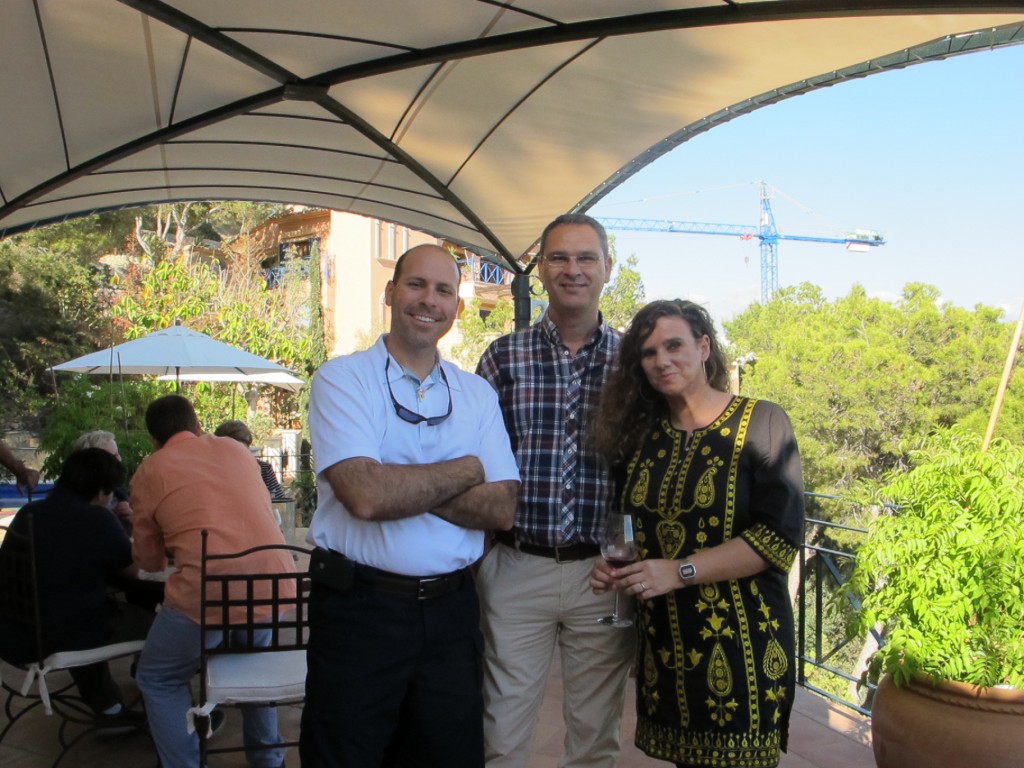
My father still has aunts, first cousins and other more distant relatives living there, so it was very exciting to go visit with my husband, children and for them to meet the new generation of cousins at the other side of the Atlantic. Certainly, as we gathered on a beautiful chilly Sunday afternoon, at first most of them where strangers to some of us, but soon we all felt a sort of kinship, a generational bond that brought us together in celebration and lively conversation. The wine kept flowing and the appetizers started to run out. It’s no cliché that time flies while you are having fun! The party lasted longer than expected, so Emilio and Toni headed to a restaurant at the port called Barlovento to buy traditional bomba rice paellas to fill our tummies. The paellas were exquisite, everyone had seconds! Toni explained to us that they accompany paella with strips of crisp cubanel peppers. I guess in Rome, do as Romans do!
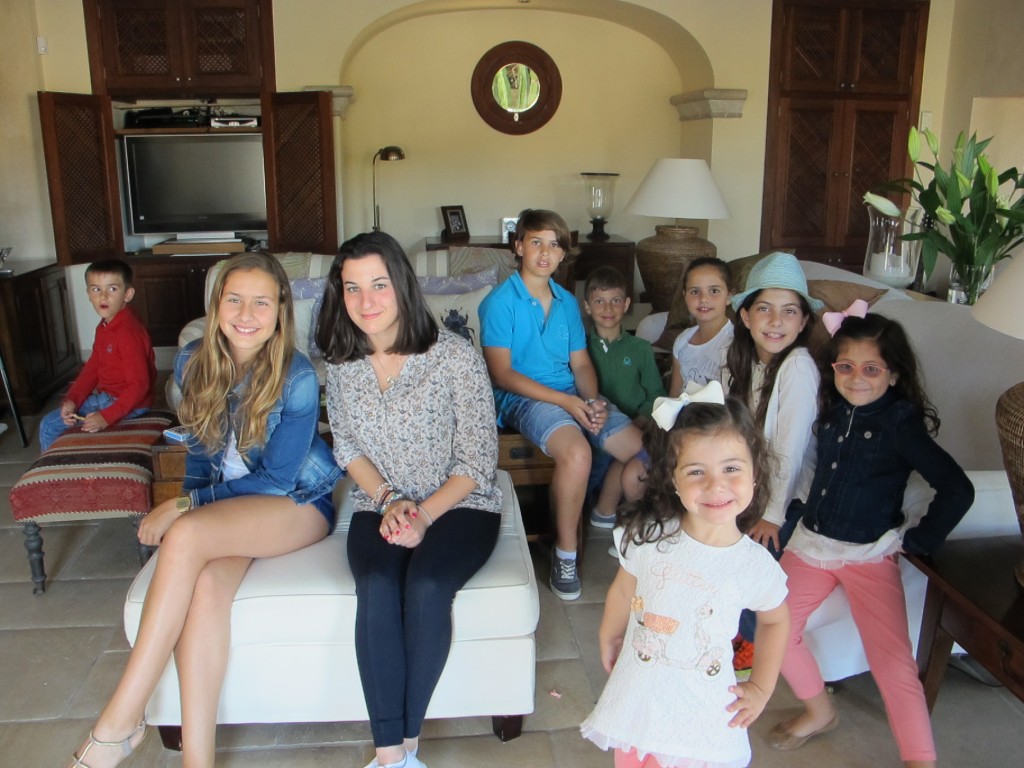
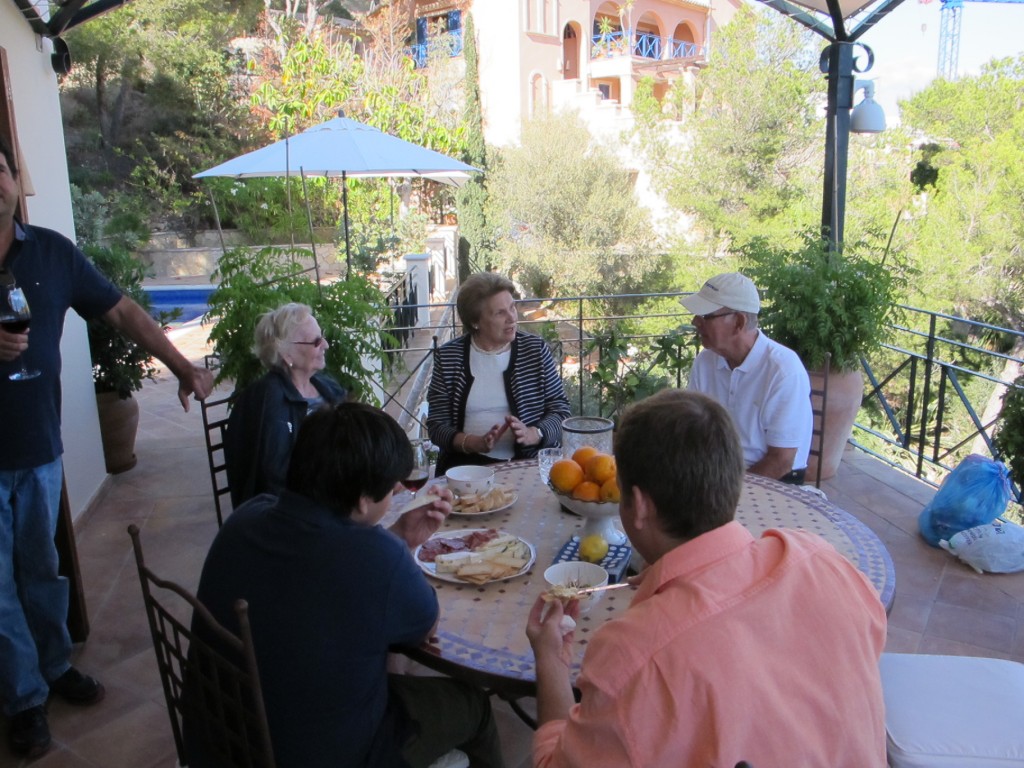
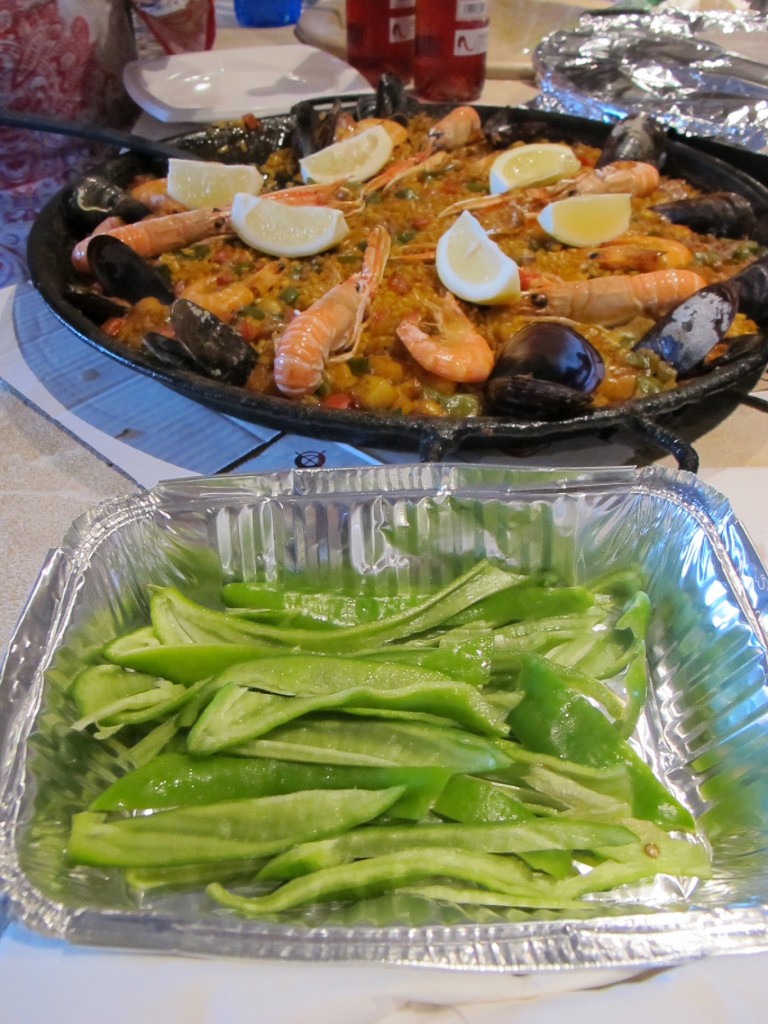
Our beautiful rental home was located on a cliff at Port d’Andratx, a quaint coastal town on the western tip of the island with lovely restaurants, stores and cafés facing the bay. It was delightful to watch every afternoon when the fishermen would come back to port in their liners with the catch of the day followed by a flock of seagulls eating the scraps they threw overboard as they were cleaning the fish. Also, the children enjoyed feeding the ducks and swans at the estuary, the public playground, the Club de Vela, snacking on local pastries at La Consignia and of course the popular gelats (ice cream) that they pleaded for almost every afternoon. We were pleasantly surprised that supermarkets do not give out plastic bags. If you don’t bring your reusable ones, you must pay almost an Euro for each bag you use. We also visited Palma, Valdemossa, Estellens and of course, Soller, where my family comes from. It is not strange to see large groups of germans, british and/or scandinavians in Mallorca. During the past few decades, Mallorca is their destination of choice.
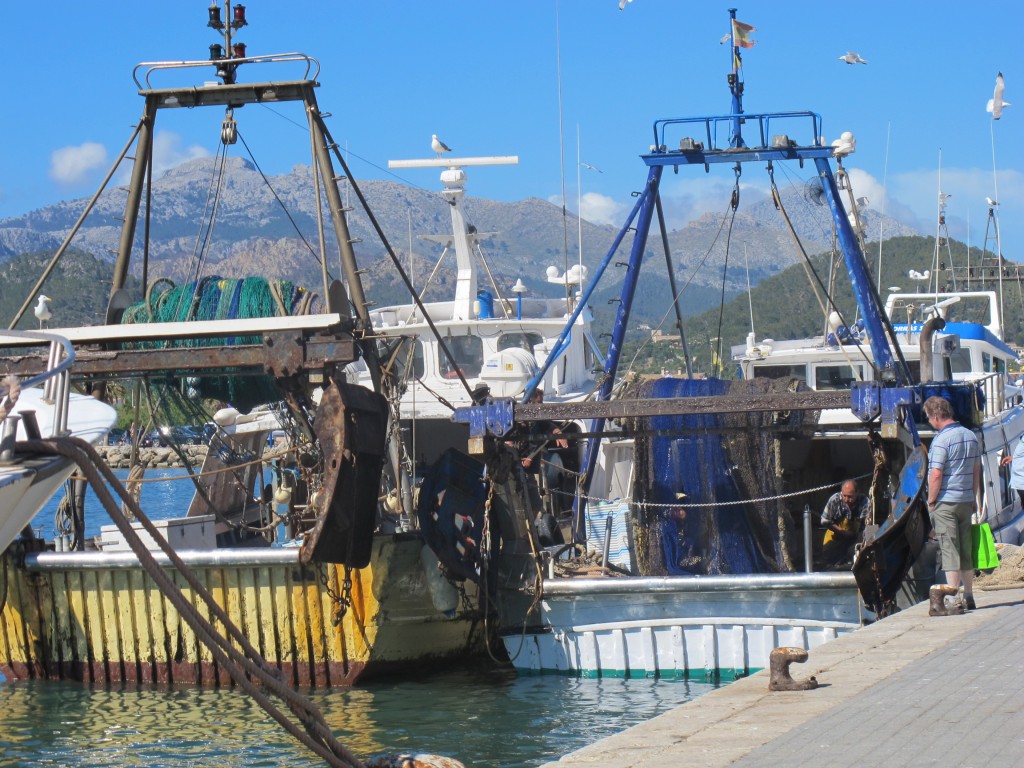
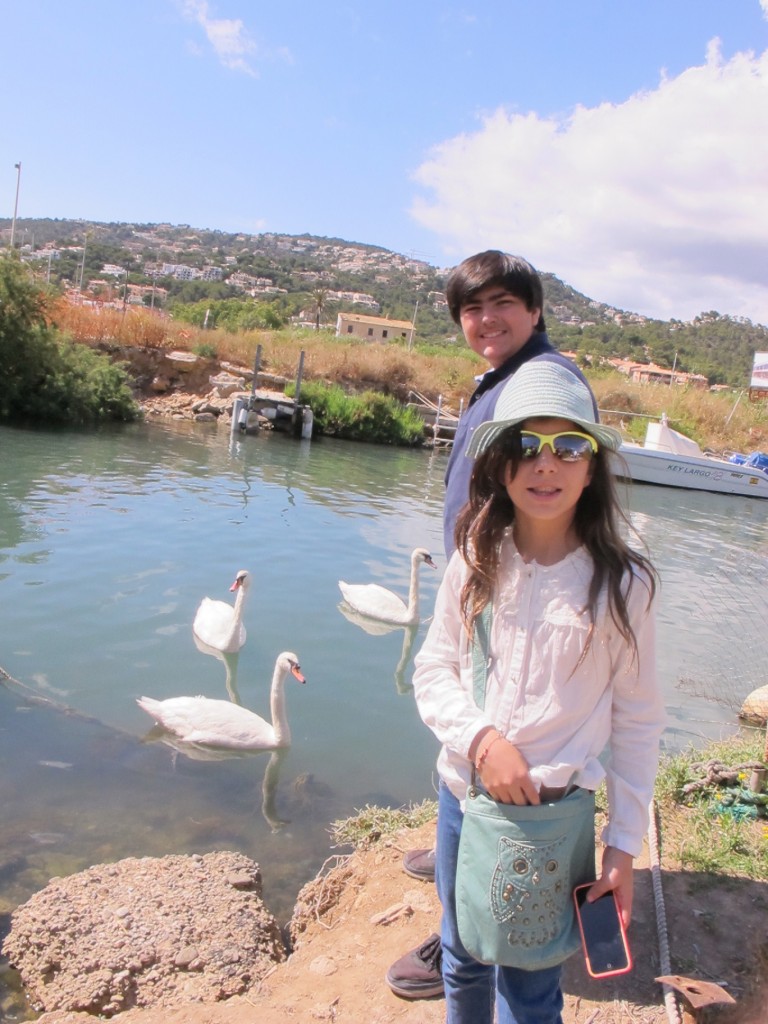
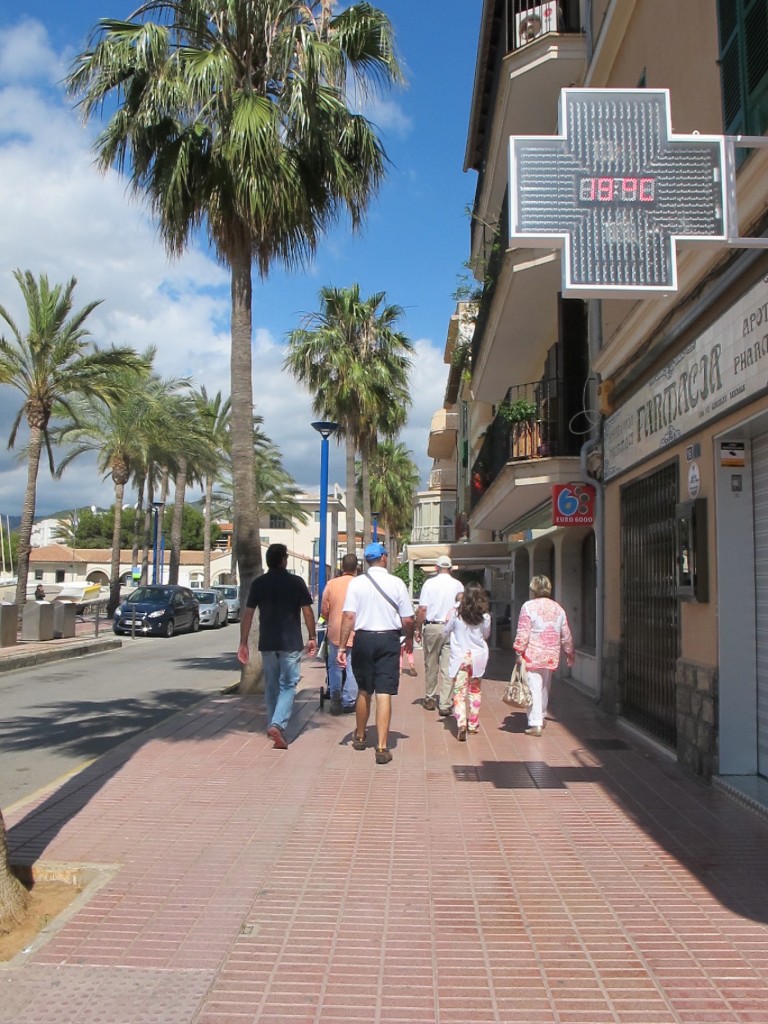
The Arbona’s can be traced to have been in Mallorca (specifically the port of Soller) since the 1400’s according to my research, when last names started to be used. In this case, it is believed the last name emerged by referring to the settler’s place of origin presumed to have been the region of Narbonne, south of France, a major trading port since Roman times. Some say these families were looking for religious, economic and political freedom, but little did they know the next generations would have to face the Spanish Inquisition and fight off pirates to survive. As the number of families with the same surname started to proliferate, they started using a distinctive Solleric way to identify which Arbona (the same within any other native last name) you were related to. For example, we are the Arbonas of Can’Flé (Can means “house of” in Mallorcan dialect). My great grandmother’s last name is Coll of Can’Tyrany and so on. If you visit the port/city of Soller, logic tells you the pioneers could have only arrived by sea and must have remained isolated from the rest of Mallorca for centuries because it’s surrounded by a very treacherous ridge of mountains called Tramuntana (where there is an ideal climate to cultivate grapes to make wine) on one side and the ocean on the other.
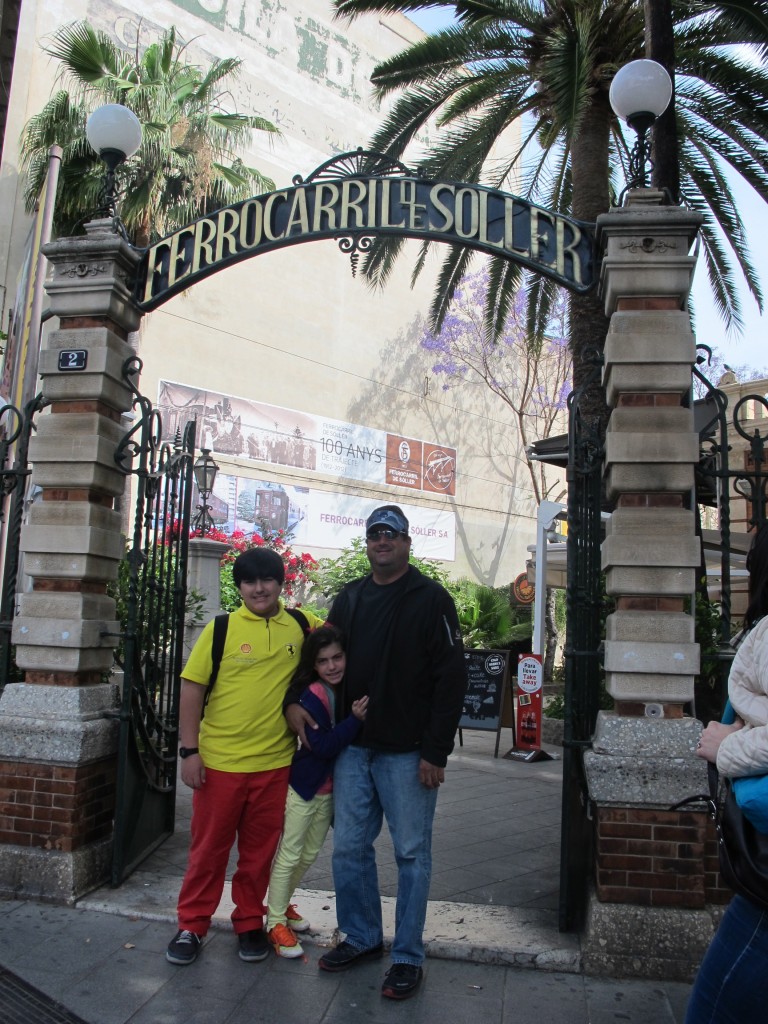
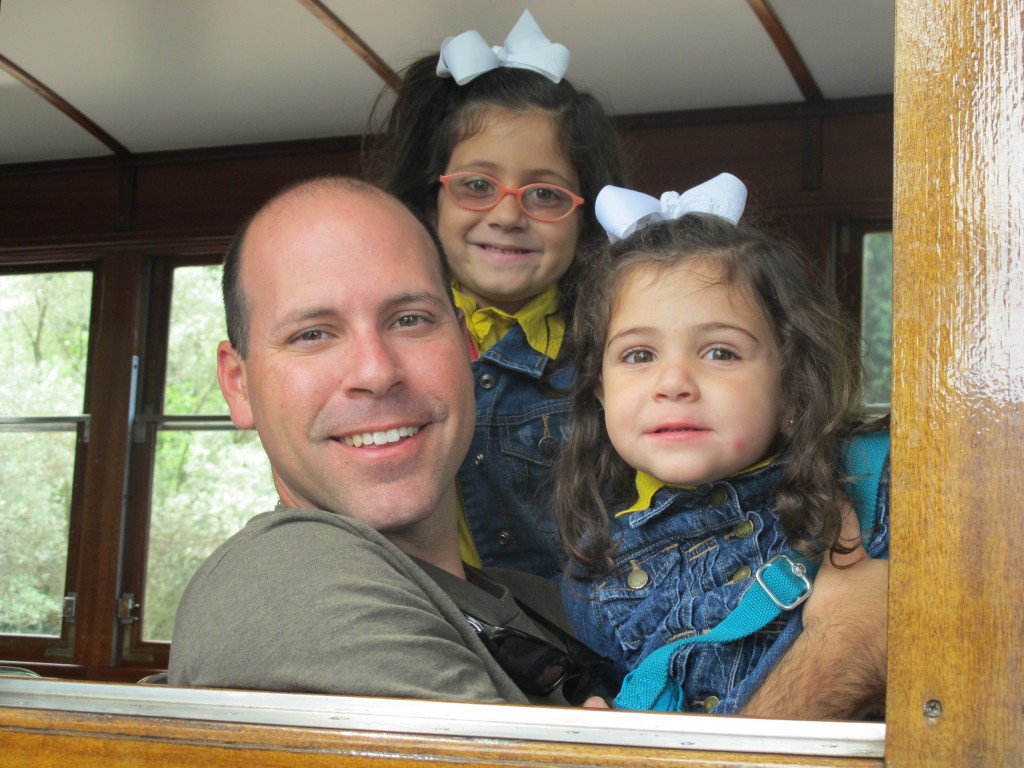
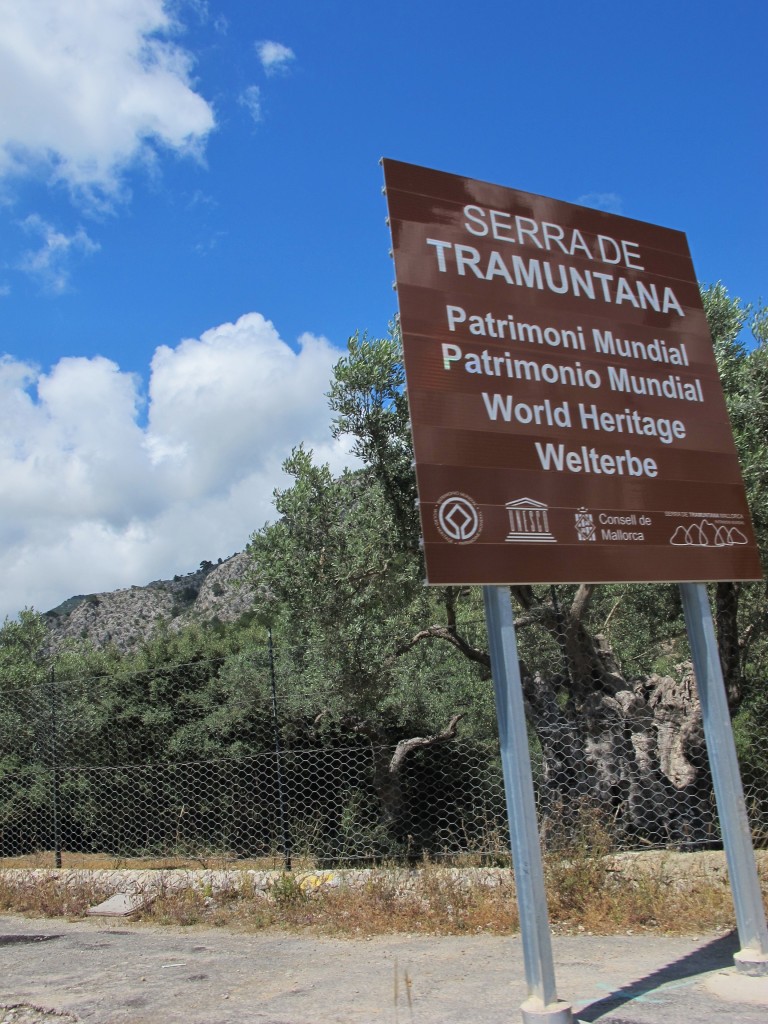
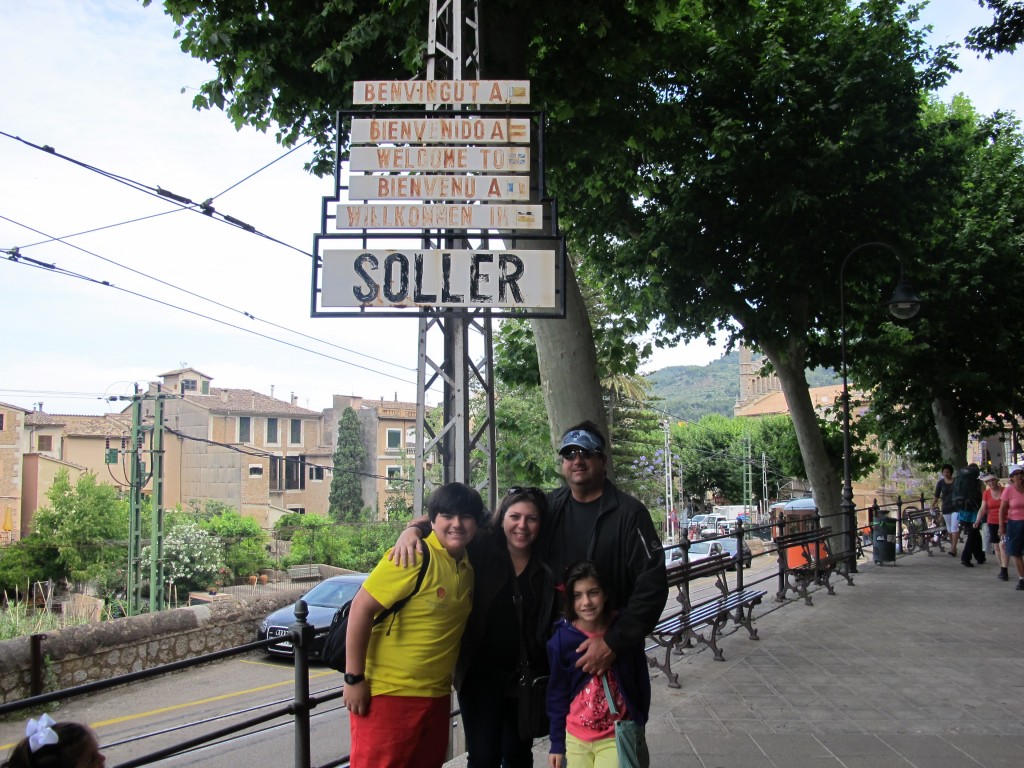
Throughout time, Soller has also been influenced by the moors, who brought with them the bitter orange and language. Many local words used today are rooted in arabic. For example, in the word ensaimada, saim means pork lard in arabic, one of the main ingredients used to make the delicious and typical pastry. In addition, there are notable influences of the romans, greeks, France, India(sweet orange) and other travelers by way of the Silk route. Sollerics were famed for their fertile land and agriculture, especially citrus and olives. However, in the 1860’s a terrible plague invaded their crops and many were forced to abandon their fields and move to south of France, Switzerland, Belgium and of course, the America’s. The Mallorcans who came to live to Puerto Rico over a century ago, many of them Sollerics, where hard working, frugal, family oriented and proud of their origins and traditions. In the early XXth century, some returned to Soller (or at least their descendants did), with money in their pockets and gave the city a vibrant resurgence that can be seen today in many of the old majestic homes in the port and in the center of town in the valley. In addition, they started to cultivate again the fields, reignited the economy and started to export oranges, olives and lemons by sea and built the century old Tren de Soller to cross the mountain ridge in order to sell their goods in Palma de Mallorca.
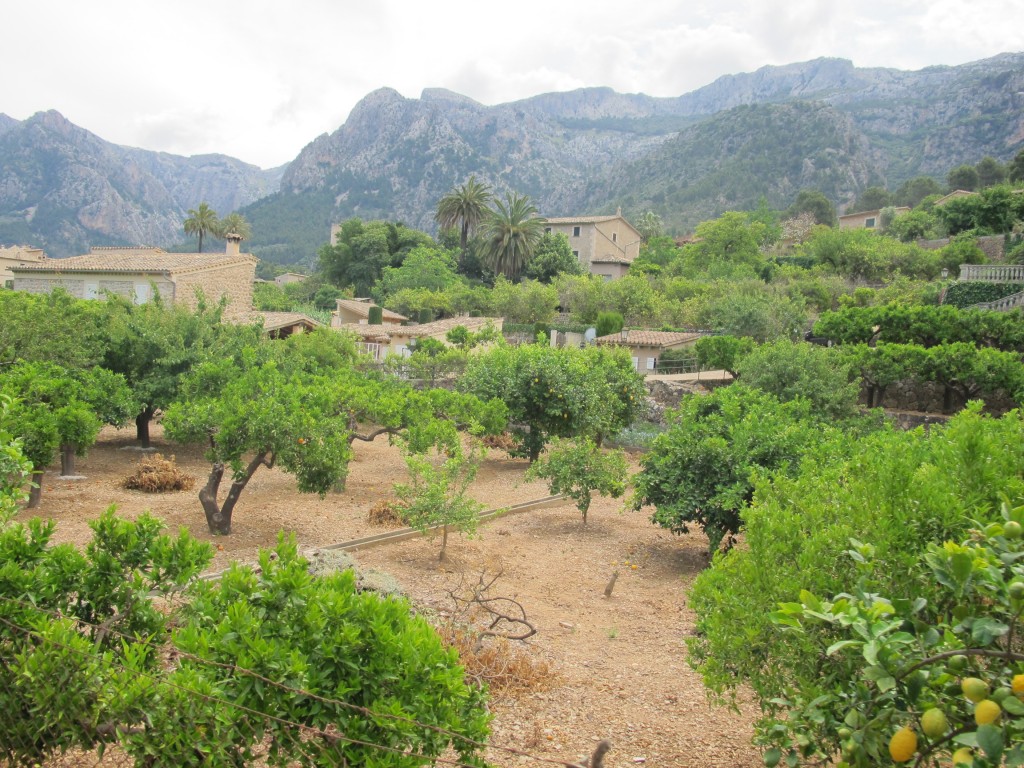
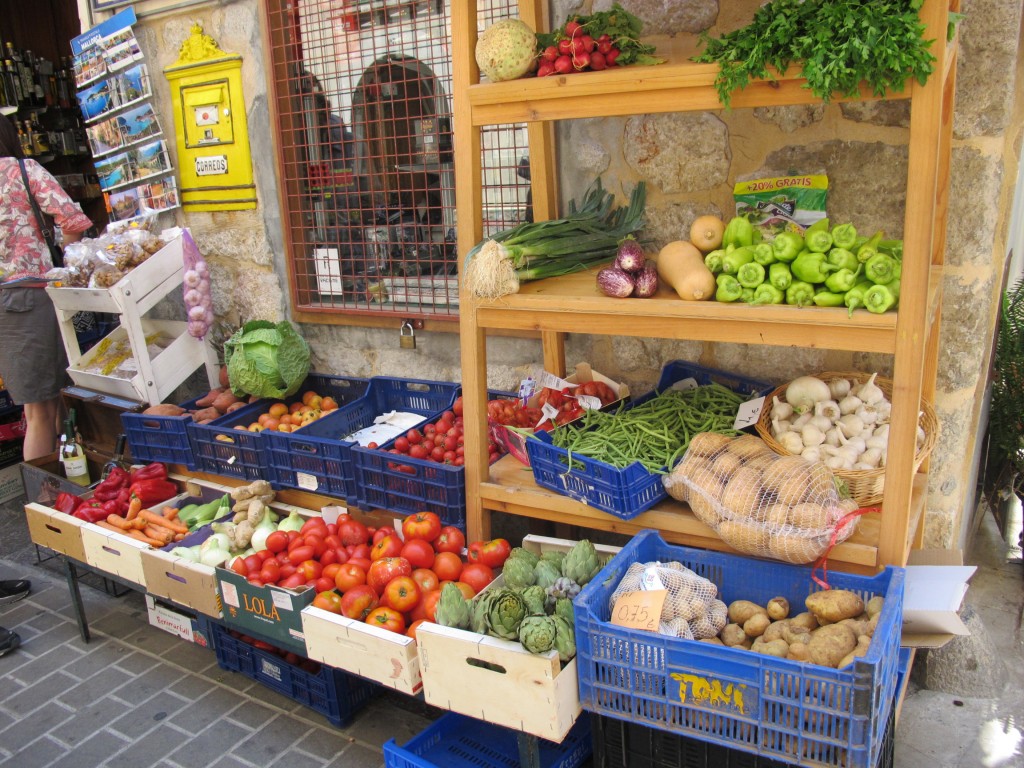
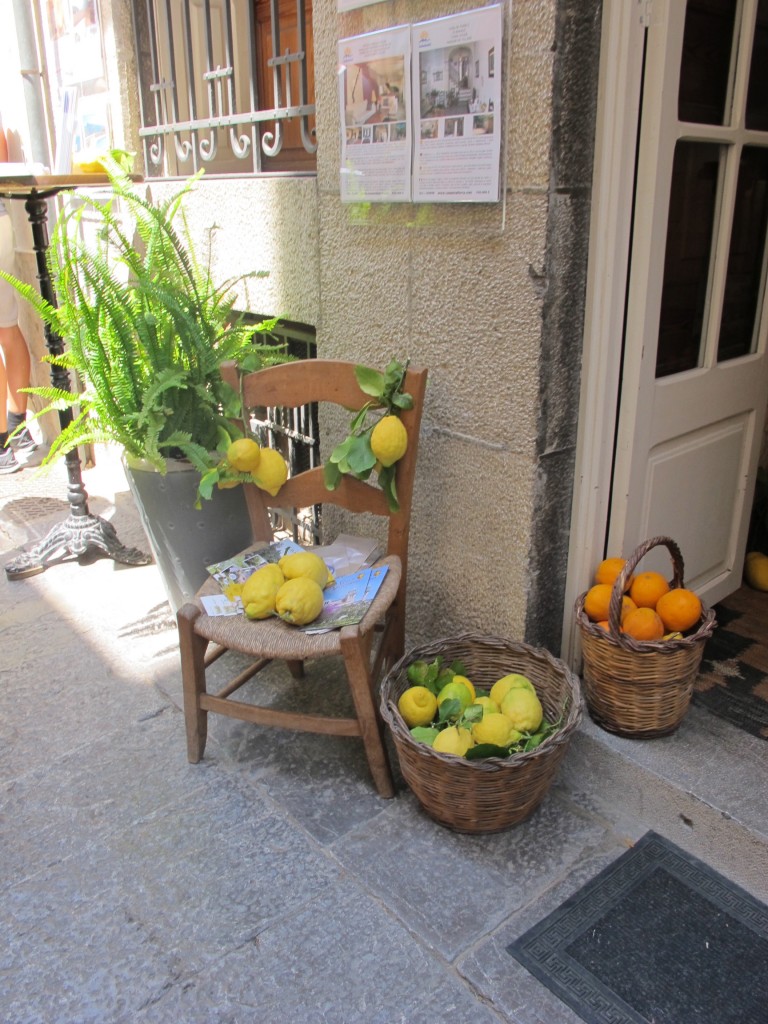
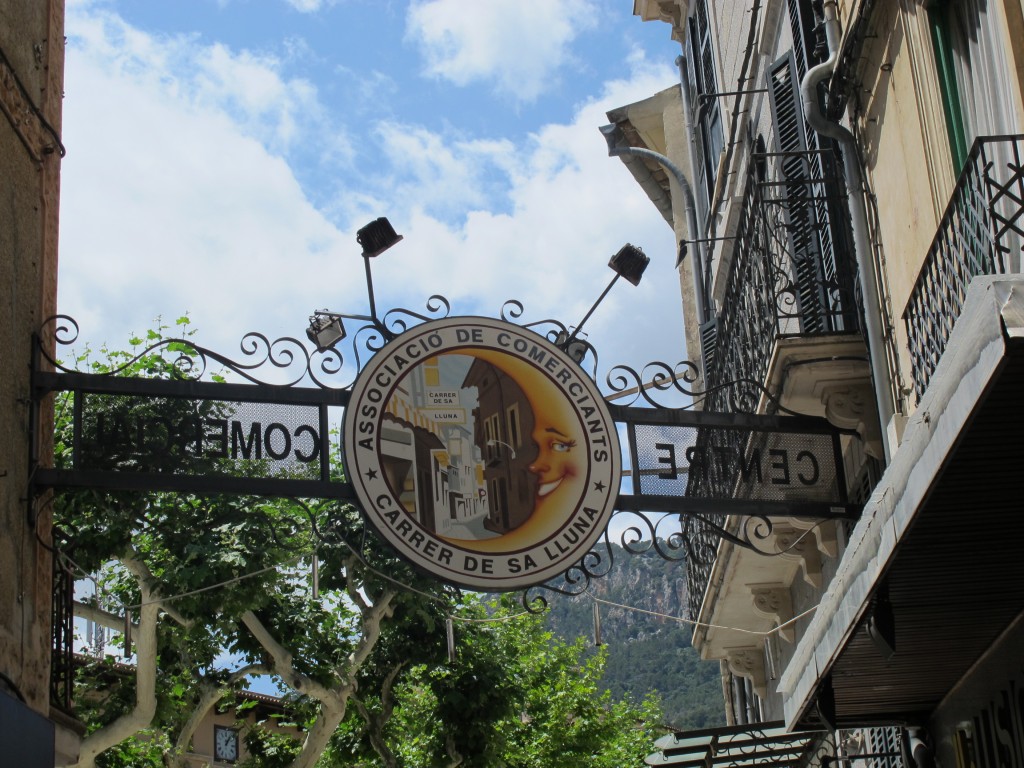
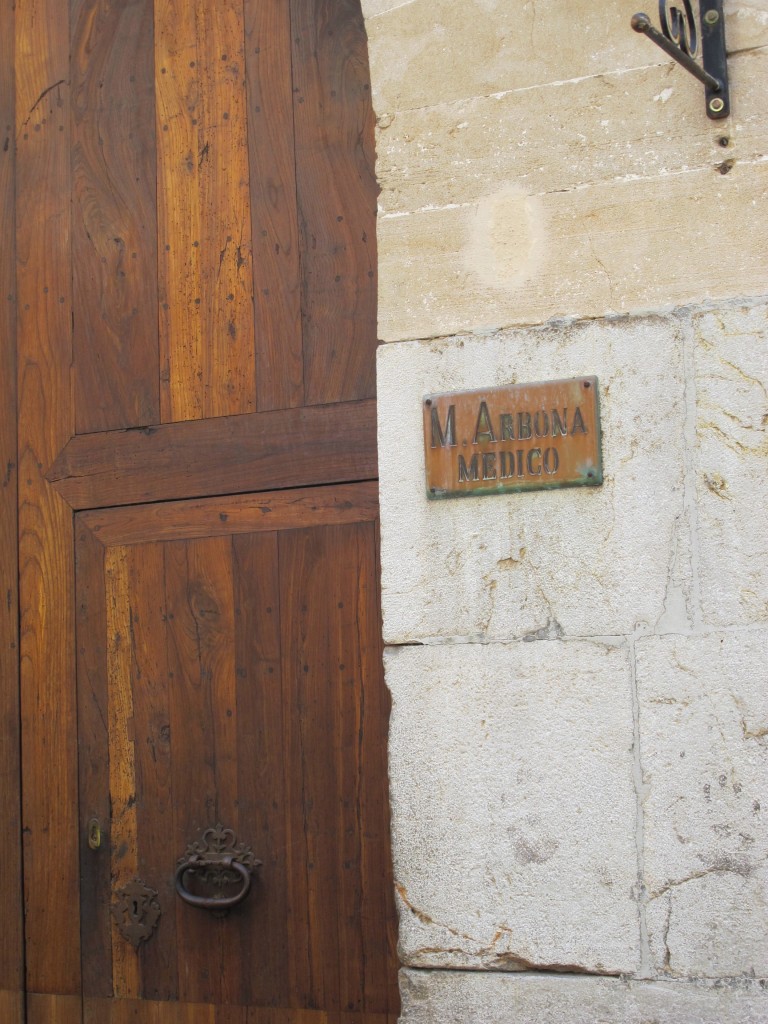
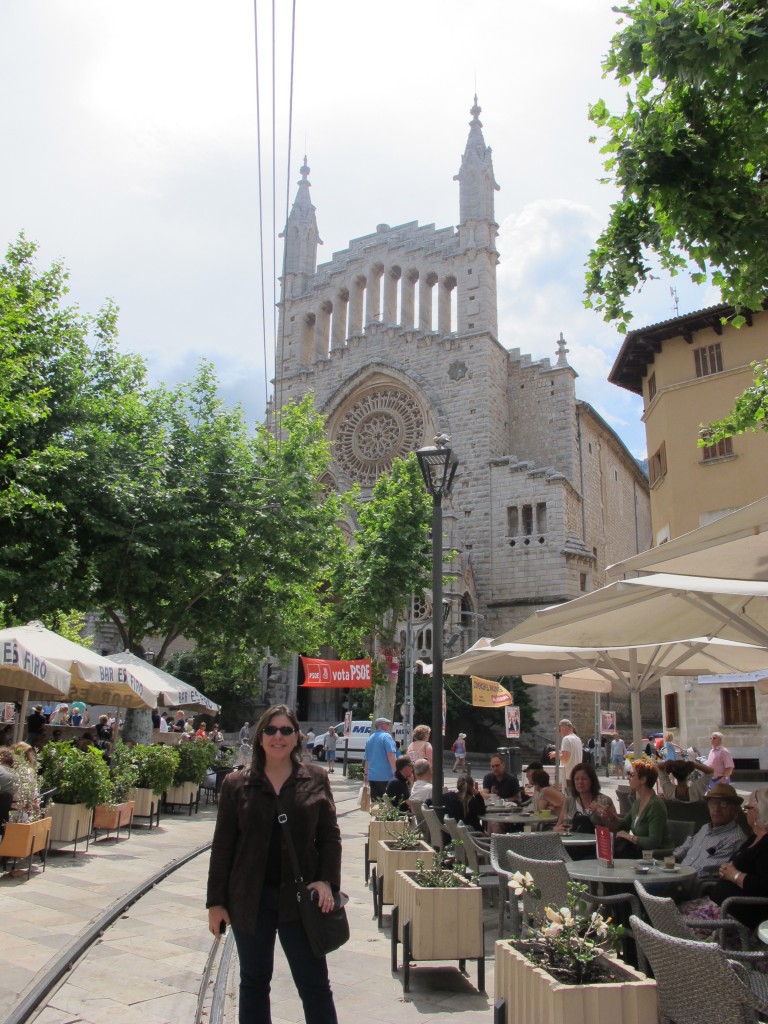
I have been to Mallorca 3 times at 3 different stages of my life. As a 7 year old up-until-then-only-child, as a free-spirited-know-it-all single 24 year old and now, as a middle-aged-married-with-children 41 year old. During my first visit I can barely recall certain family members, an old train and of course, the ensaimadas from which the sweet bread version called mallorcas in Puerto Rico derive from. During my second visit, I partied every night with Jaime, a college friend who moved back to Palma after graduation, and walked like a zombie the next day with my family to see the Cathedral, the Paseo Maritimo, Cuevas del Drach, again, the train to Soller and shopping at Porto Pi. This time around, it was different. I had a deeper sense of appreciation. I took the opportunity to spent some quality time with my parents, brothers, sisters-in-law and nieces, discover this ancient land, talk about life, history and art with my children (Chopin and Joan Miró lived in Mallorca, at least for some time) and clinched to every chance to reconnect with my Mallorcan family. We only ate local food, drank local wine and tried to absorb the local lifestyle as much as we could. Traveling always has the same restorative effect on me… As I returned home to Puerto Rico, my body and spirit were renewed and ready to charge at whatever life throws at me.
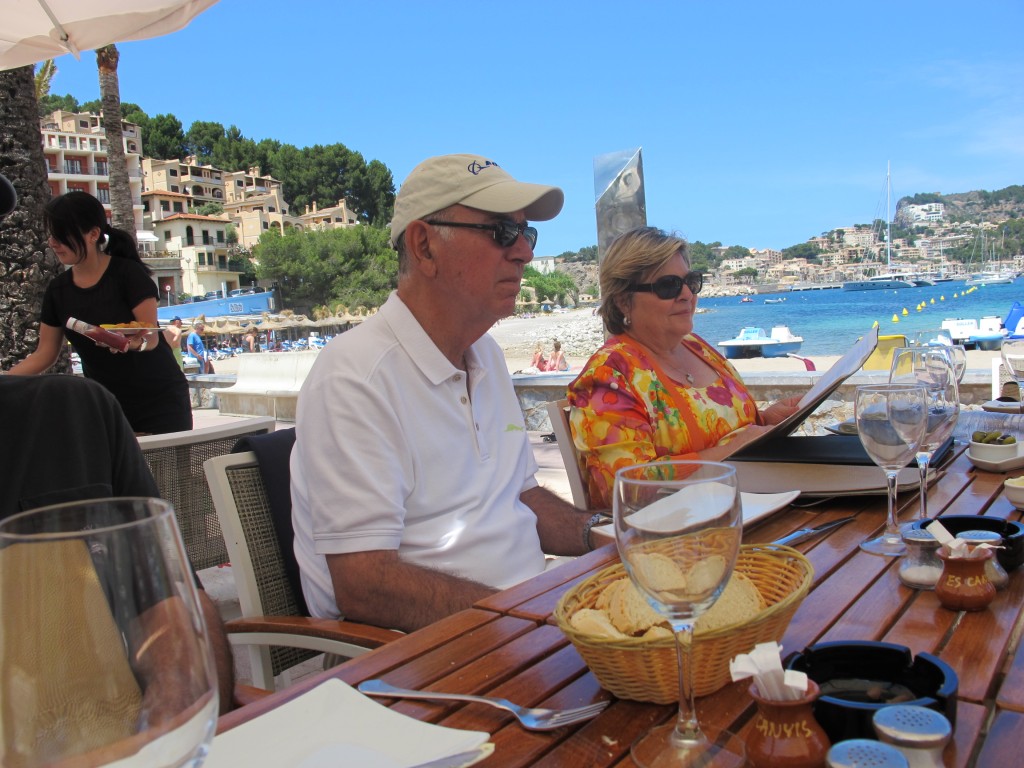
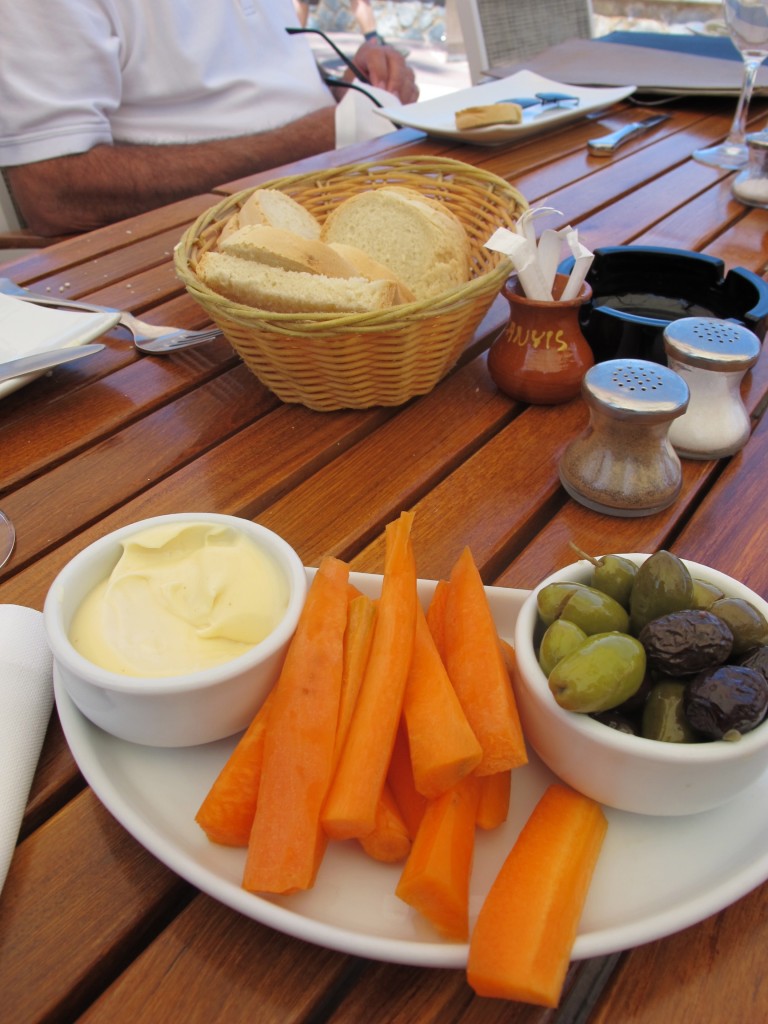
To celebrate our parent’s 45th anniversary, we treated them to a dinner cooked by a local chef recommended to us by our real estate agent. In a bit of irony, her name was Caroline Bennett, a British cook who came to Mallorca 26 summers ago as a twenty something and never left. Beforehand, I asked her to design a three course meal that included typical dishes from Mallorca made with local ingredients. First, we had fresh clams made with white wine, onions, garlic, green onions, parsley and some cream. For my sister-in-law Marisofi, who is allergic to shellfish, she prepared an arugula (rocket) salad with pears, pancetta and citrus vinaigrette. At this time, the young children were savoring a delicious homemade Pasta Carbonara to comply with all of their particular personal tastes, so we kept it simple for them, but still succulent. Meanwhile, we were served tender and savory suckling pig (usually served in Mallorca during Christmas time only) with blanched asparagus and Tumbet Mallorquín, a side dish similar to a Ratatouille originally created by using the leftovers from the garden. Tumbet consists of eggplant, potato, bell peppers, and sometimes zucchini, covered with slow simmered tomato sauce and then cooked in the oven in a “sa graxonera“, or an open clay recipient. Afterwards, the dish is garnished with chopped fresh flat leaf parsley. Following, you will find the recipe Caroline recited to me while she was cooking for us on how to make the Tumbet Mallorquín. Surely, I made it once we got home and here are the results.
BON PROFIT!
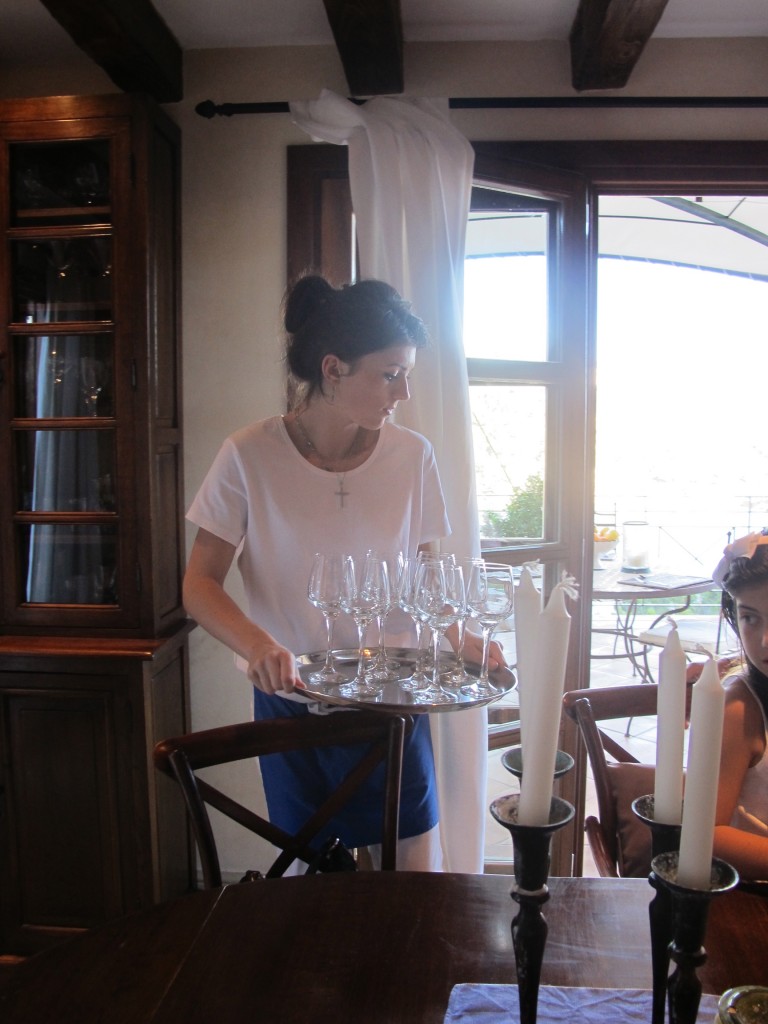
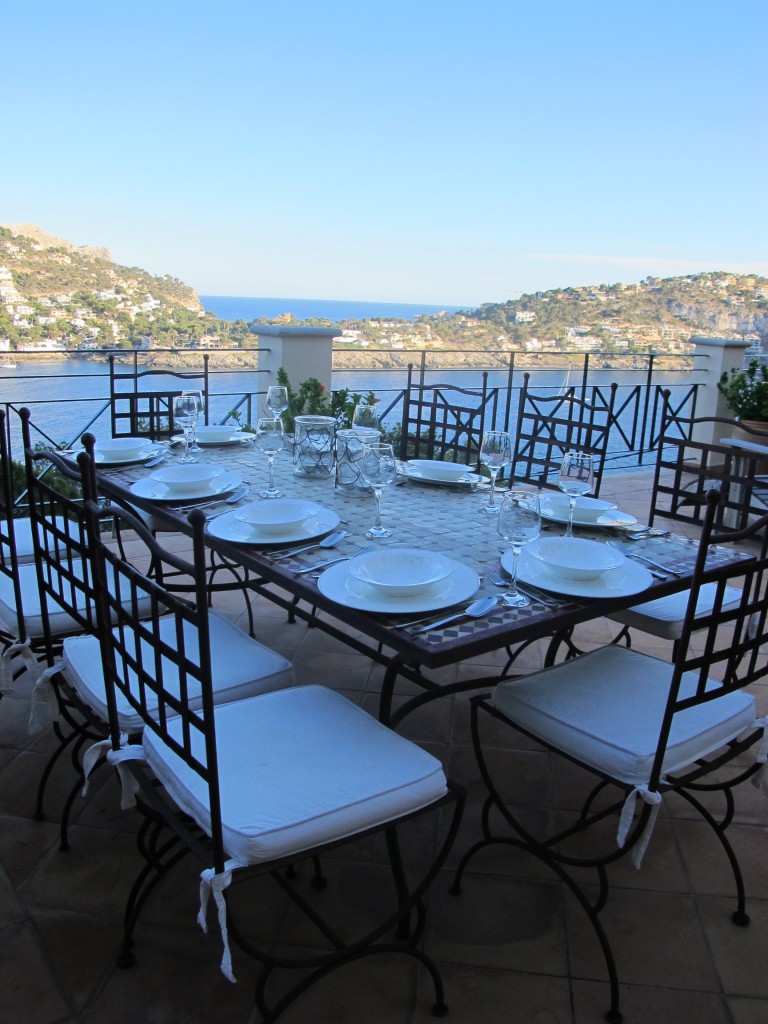

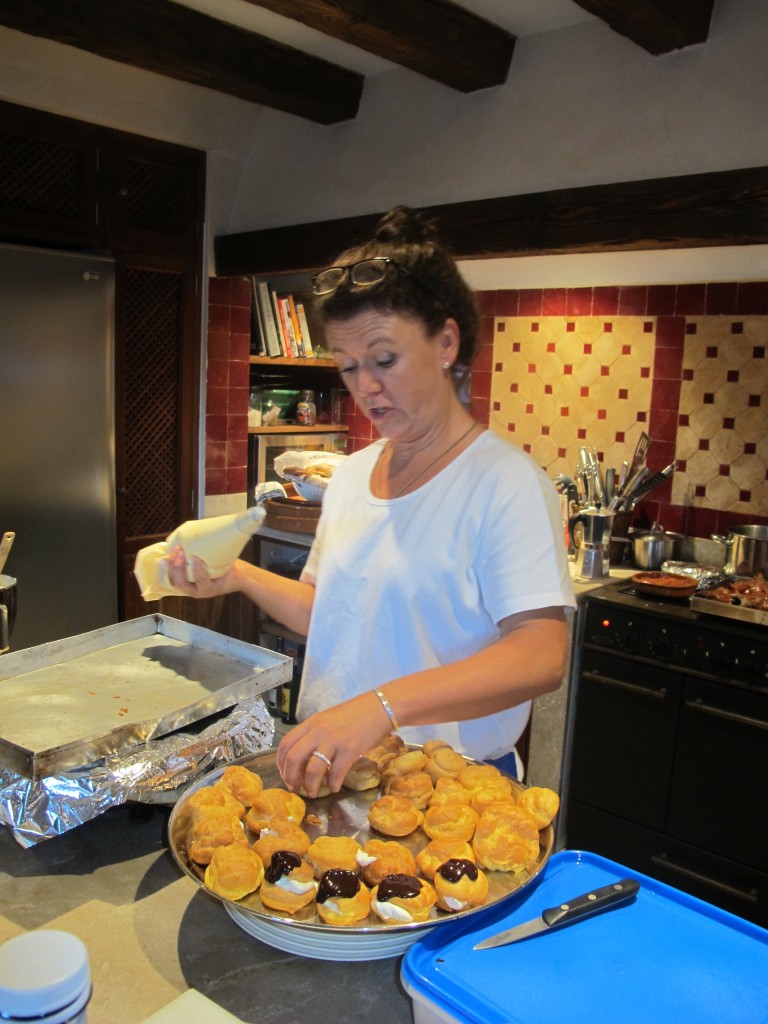
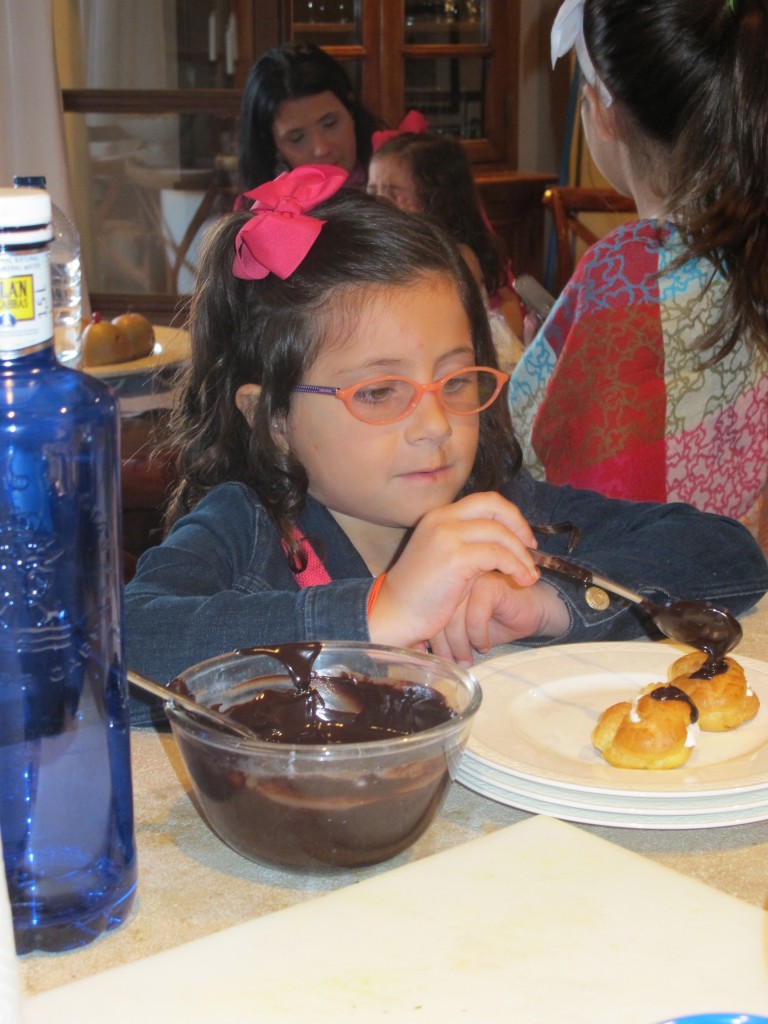
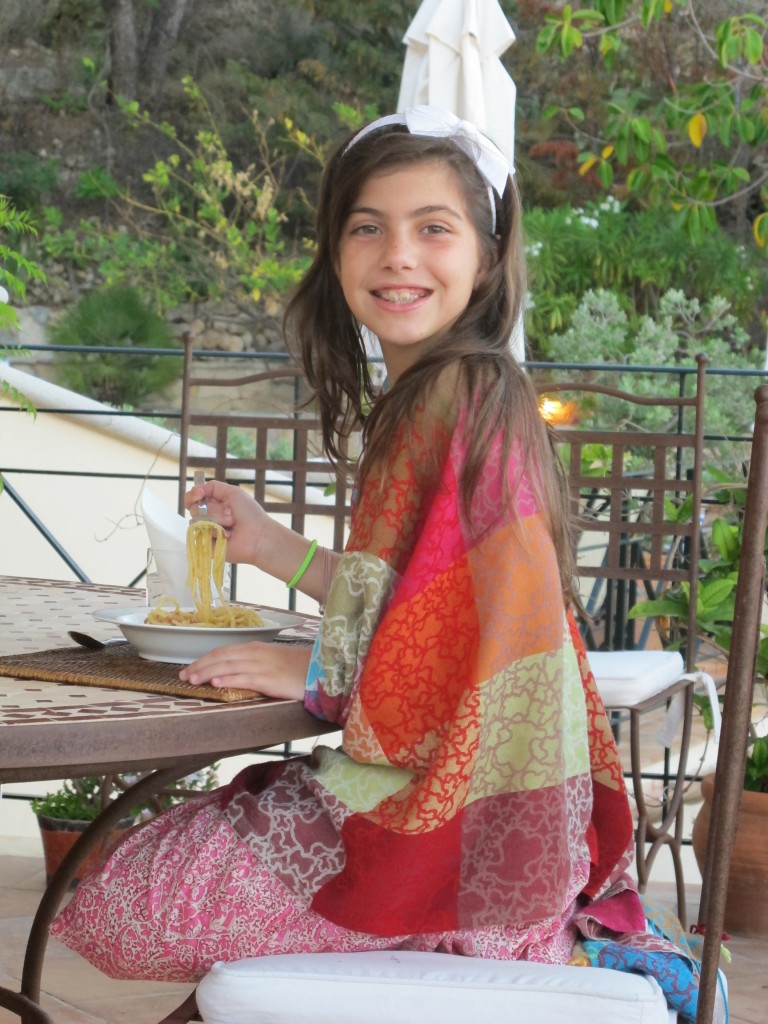
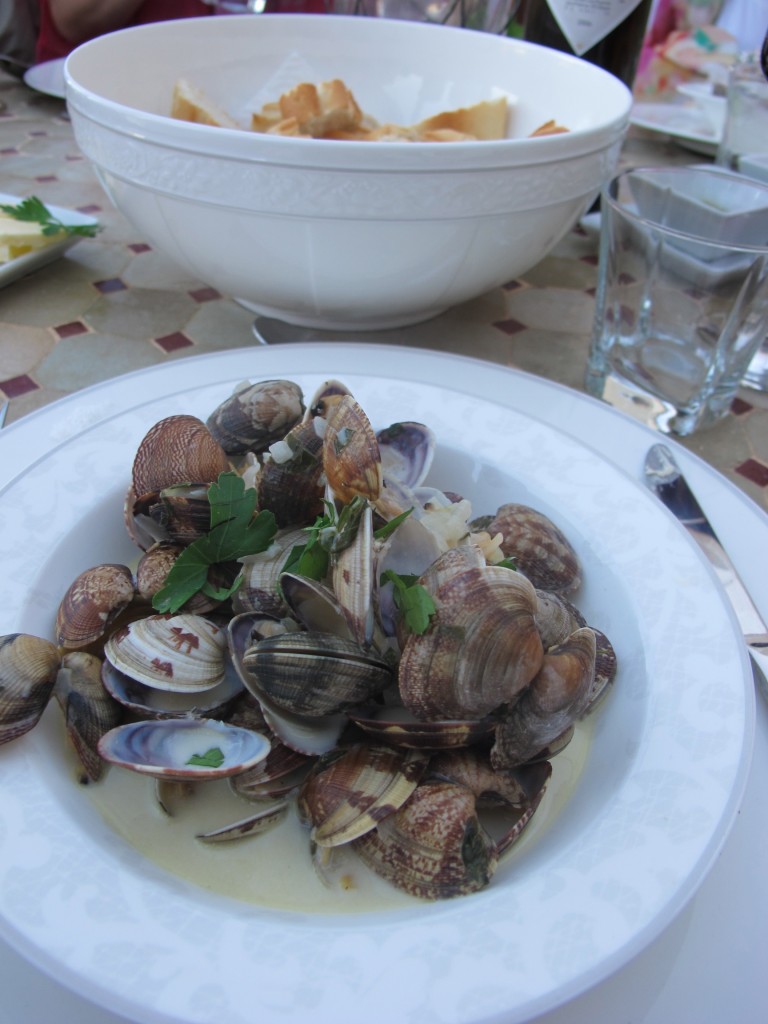
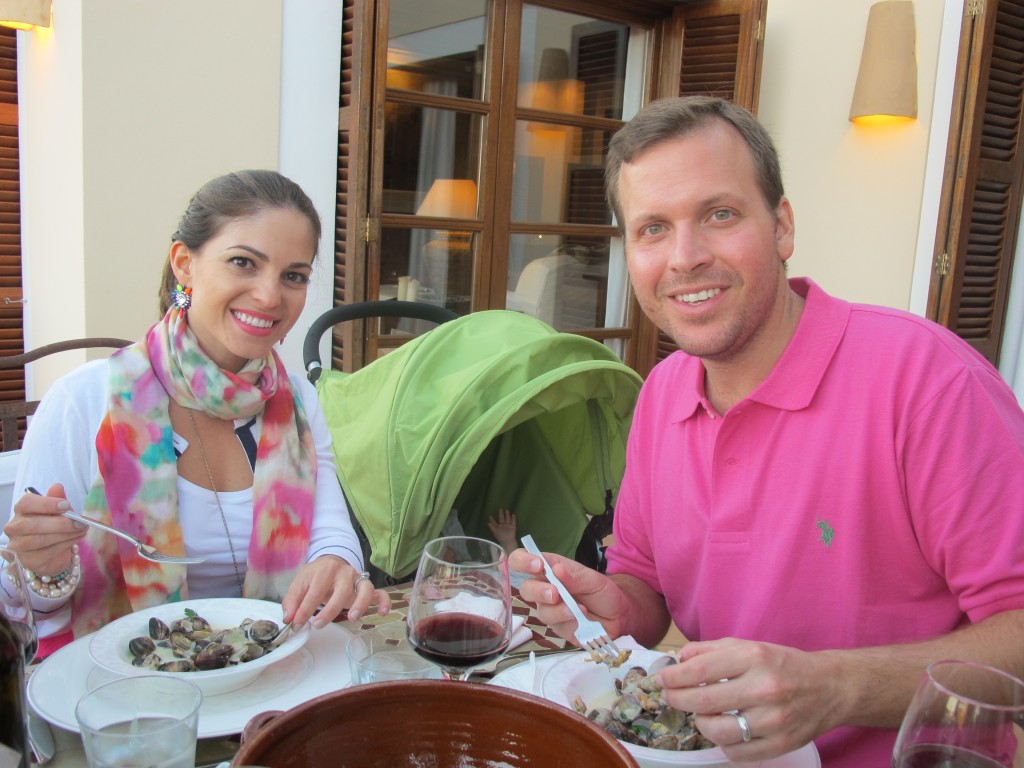
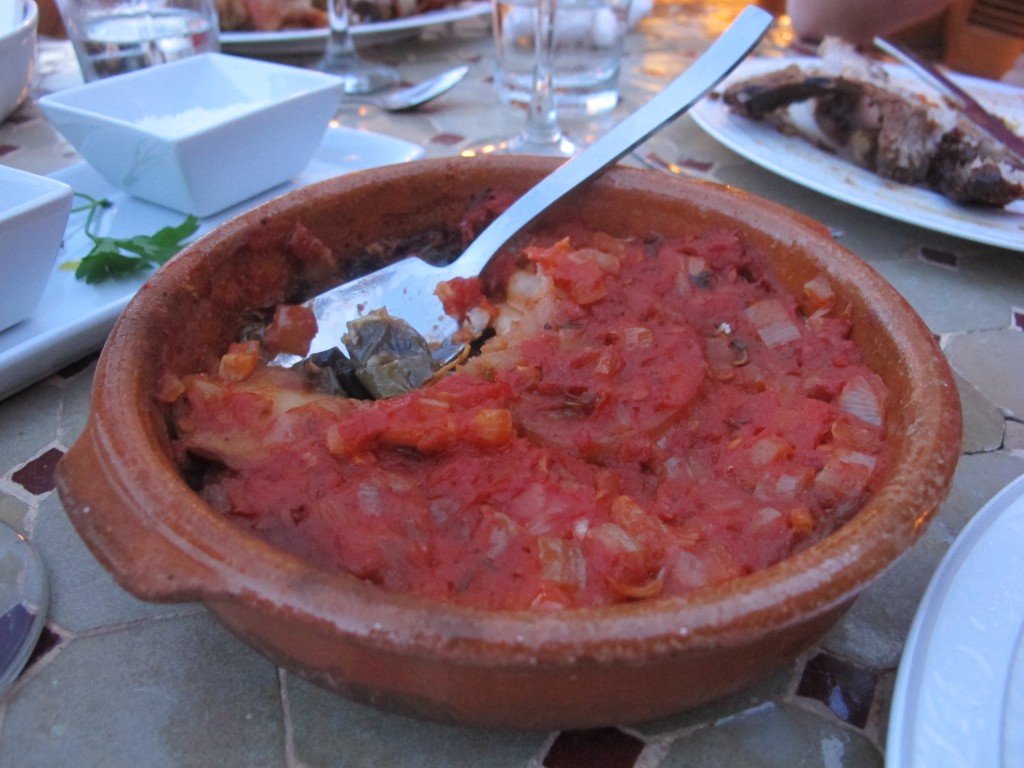
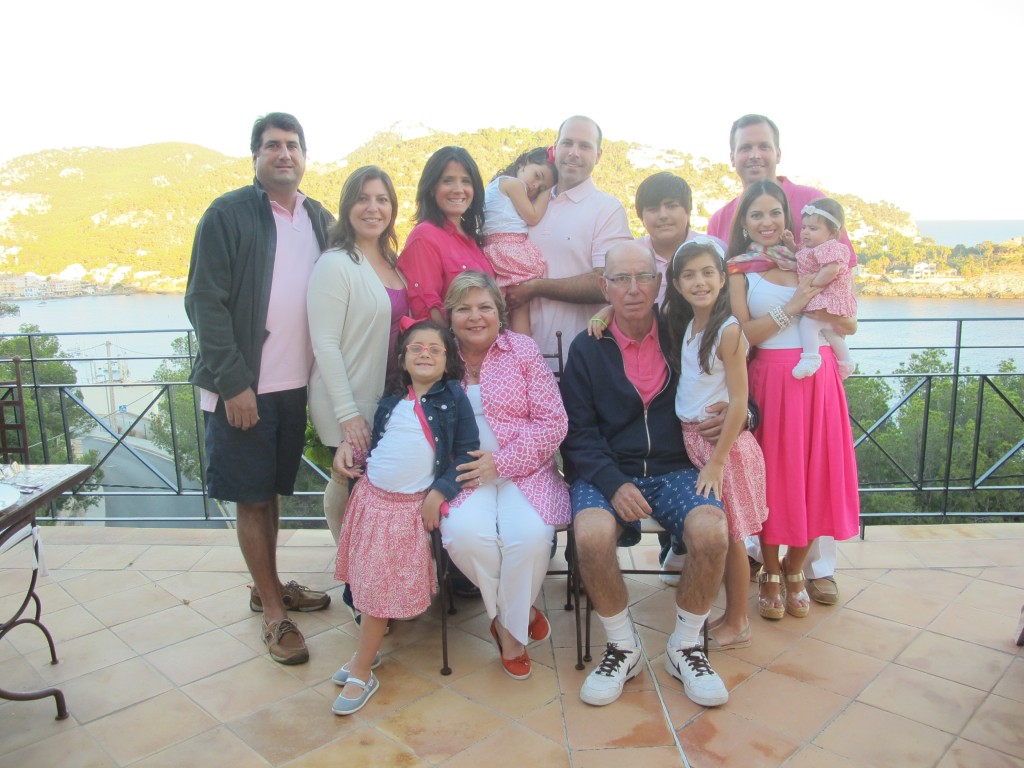
Tumbet
Ingredients
Quantities depend on size of recipient used to bake and serve. Should consider enough to cover one layer of each vegetable.
garlic cloves
olive oil
eggplant (Do not peel eggplant. I like the japanese smaller ones.)
*some salt and all purpose flour to dredge eggplant slices before frying
potatoes (peeled)
zucchini
bell peppers
tomato sauce (extra virgin olive oil, chopped onions, crushed tomatoes, garlic, salt and pepper to taste)
flat leaf parsley
Procedure
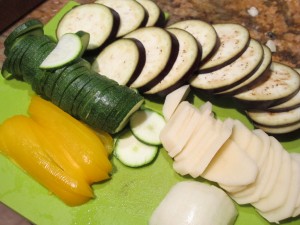
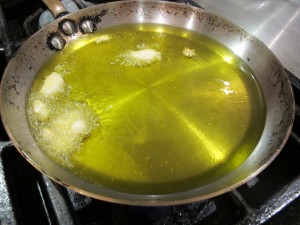
1. Prep all the vegetables by slicing eggplant, potatoes, zucchini and peppers. About 1/4 of an inch thick. I salt and let drain a little the eggplant before hand to let the bitter out, then dredge in some all purpose flour before frying. Heat a generous amount of olive oil in a frying pan, at least enough to cover the slices of vegetables. Add cloves of garlic and cook until they are golden brown over medium heat. Discard garlic cloves then proceed to fry the vegetables in batches only until cooked but not brown.
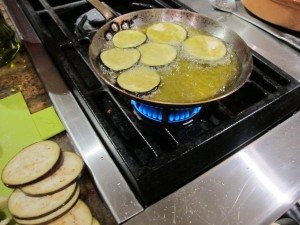
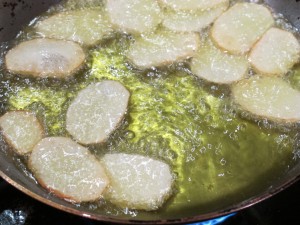
2. After letting the vegetables drain excess oil, start layering the vegetables in a clay or ceramic oven proof dish. Sprinkle each layer with some sea salt.
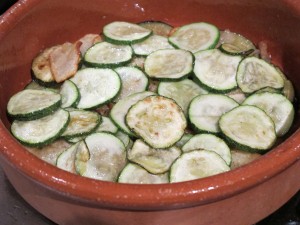
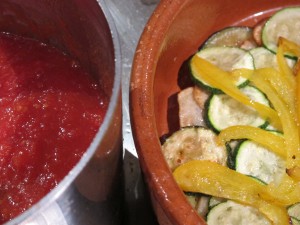
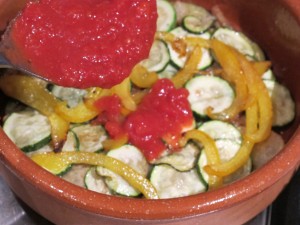
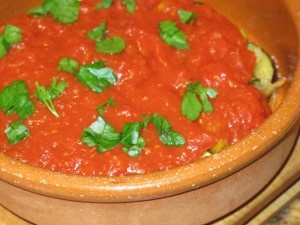
3. Pre heat oven 350 F. Meanwhile, simmer the tomato sauce and when ready, pour over to cover the vegetable layered casserole. Bake uncovered for about 30 minutes for the dish to come together. Garnish with fresh flat leaf parsley and serve as a side dish to your favorite main entreé.










Nice…..yo tambien soy Coll….
A Los 17 anos pases un message en Soller con los Ferriol de Ponce. Conoci a tu familia y disfrute de Esa Isla tan linda. Sabes que tu familia es muy especial para mi. Bello relato de nuestra cultura. Besos,
This has been an exquisite narrative of your ancestors and your lovely trip to Mallorca.
My second past generation on my mother’s side are Gilot from the south of France. Caamaño comes from Galicia where we are planning to go with the whole family next summer for them to meet their cousins from my husband’s side as my father in law was the only one from the family was born in Cuba.
I don’t have any direct family in Galicia but you have really placed the seed of curiosity to find out about previous generations. Our Caamaño’s ancestors also established in Arecibo while the Gilot’s between Ponce and Caguas.
Great job!!!